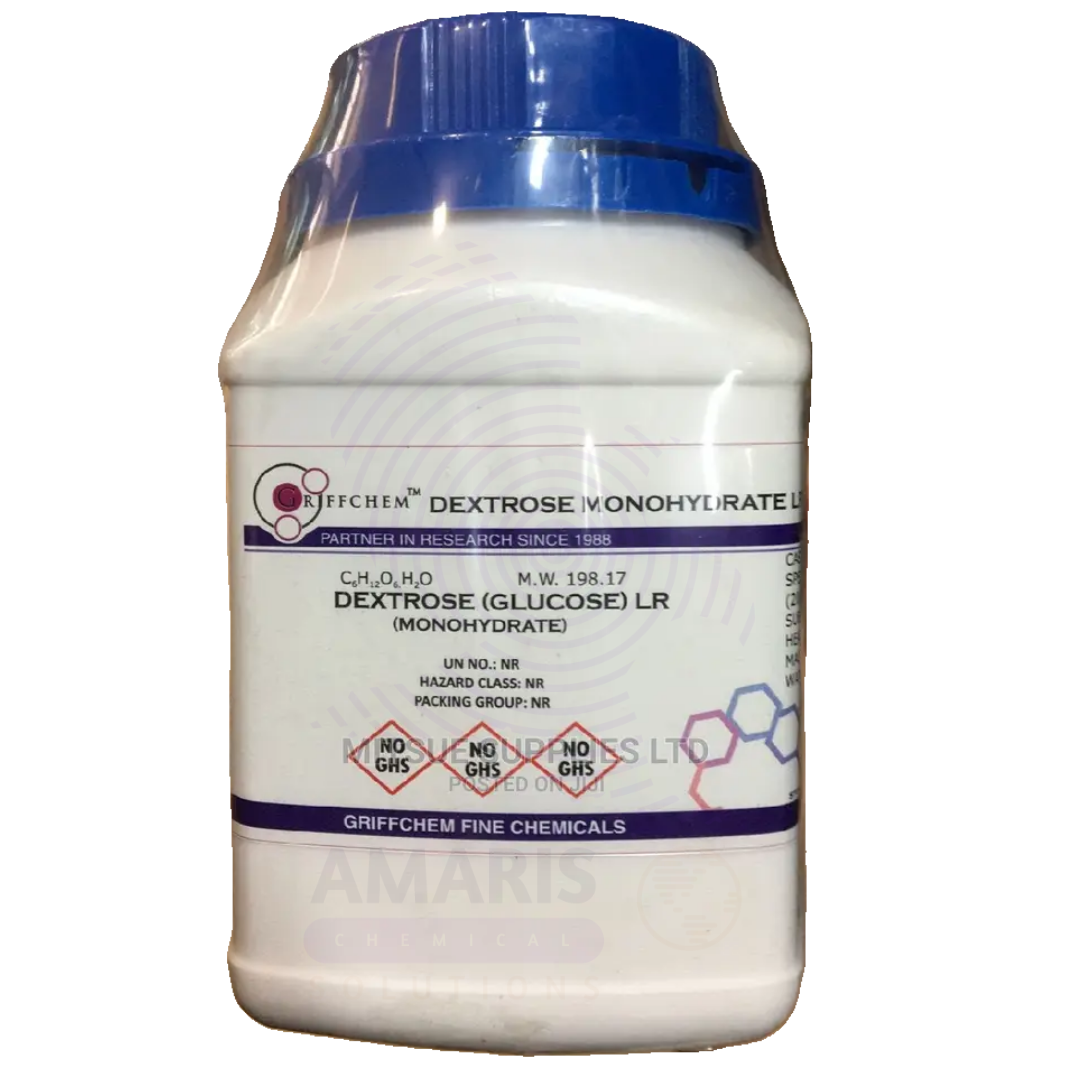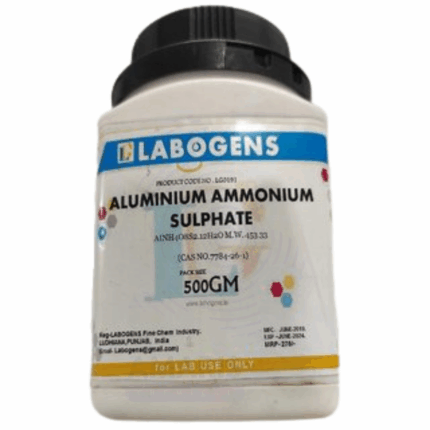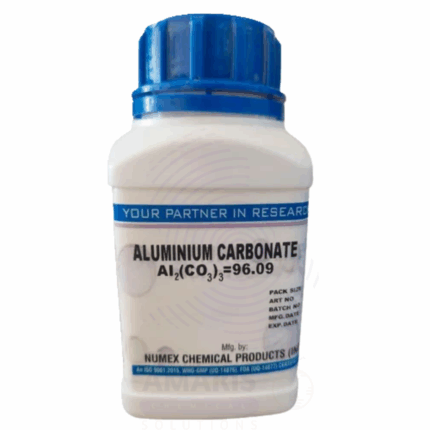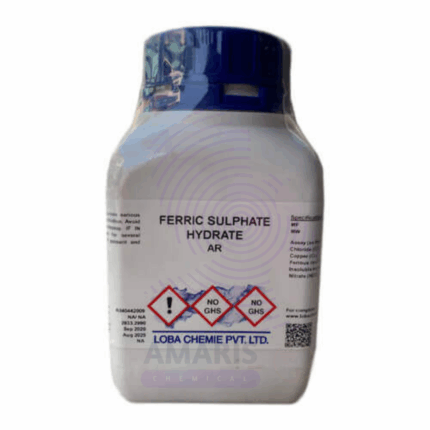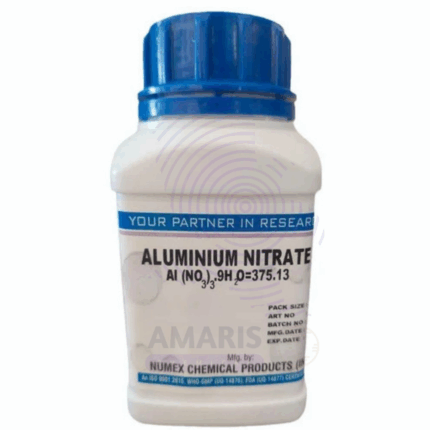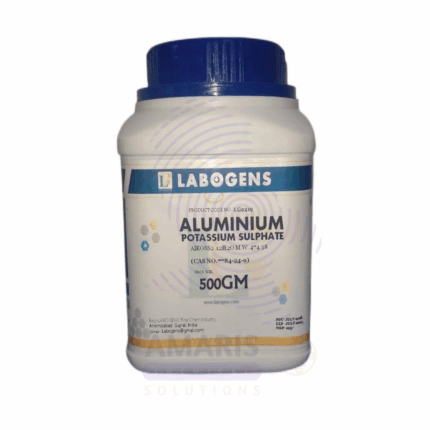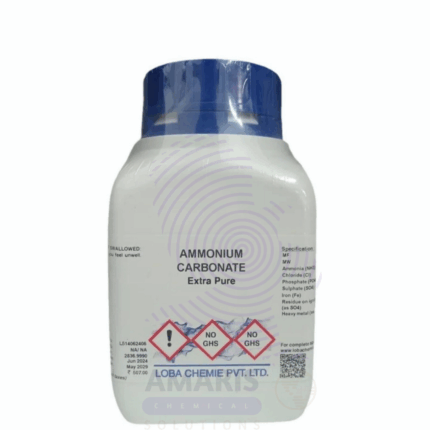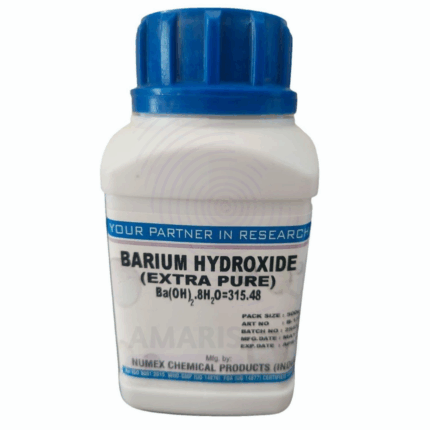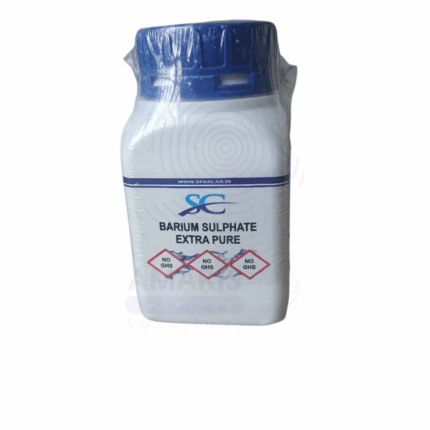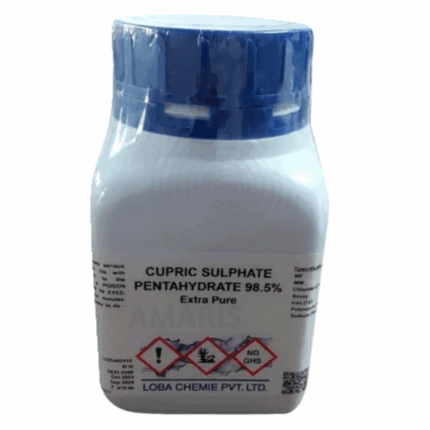
Dextrose Monohydrate Glucose Extra Pure
$ 18.15
Dextrose Monohydrate Glucose Extra Pure is a laboratory-grade form of glucose with one molecule of water per glucose unit, offering high purity and excellent solubility in water. It serves as a vital energy source in microbiological culture media, fermentation experiments, and biochemical assays. Its predictable behavior and minimal impurities make it suitable for preparing reagents, buffers, and standard solutions in analytical and biological research. This compound is especially useful in cell culture work and metabolic studies where glucose is a key variable. Store in an airtight container away from moisture and direct sunlight to maintain its crystalline integrity.
Dextrose Monohydrate Glucose Extra Pure
Primary Uses
- Carbon Source in Culture Media
- Supplies energy for microbial growth in bacteriological and mycological media.
- Fermentation Studies
- Used as a glucose substrate in yeast/bacteria fermentation experiments.
- Biochemical Assays
- Involved in tests like glucose oxidase assays, DNS, Benedict’s, and Fehling’s for sugar quantification.
- Osmotic Balancing Agent
- Added to buffers and solutions to maintain osmotic pressure in biological systems.
Secondary Uses
- Cryopreservation Component – Stabilizes cells and enzymes during freezing.
- Standard Compound – For calibration of reducing sugar tests and carbohydrate analysis.
- Educational Labs – Used in demonstrating sugar reactivity and Maillard reactions.
| PACK SIZE |
500 grams Plastic Tin |
|---|
1. Basic Identification Attributes
- Chemical Name: Dextrose Monohydrate (Glucose)
- Other Names: D-Glucose Monohydrate, Corn Sugar, Grape Sugar
- CAS Number: 14431-43-7
- Chemical Formula: C₆H₁₂O₆·H₂O
- Molar Mass: 198.17 g/mol
- Grade: Extra Pure (Laboratory Grade)
2. Physical & Chemical Properties
- Appearance: White crystalline powder or fine granules
- Odor: Odorless
- Taste: Distinctly sweet
- Solubility: Freely soluble in water, slightly soluble in ethanol
- Melting Point: ~83 °C (with decomposition)
- Optical Rotation: +52.5° to +53.5° (in aqueous solution)
- Hygroscopicity: Hygroscopic — absorbs moisture from the air
3. Safety & Hazard Attributes
- GHS Classification: Not hazardous under normal lab use
- Hazard Statements: None
- Precautionary Measures:
- Avoid generating dust
- Use standard PPE (gloves, goggles, dust mask if airborne)
- First Aid:
- Inhalation: Move to fresh air
- Skin/Eye Contact: Wash with water
- Ingestion: Non-toxic in small quantities
4. Storage & Handling Attributes
- Storage Conditions:
- Keep in tightly sealed container
- Store in a cool, dry place
- Protect from moisture and light
- Handling Advice:
- Avoid dust formation
- Use in a dry atmosphere when weighing
5. Regulatory & Compliance Attributes
- EINECS Number: 200-075-1
- UN Number: Not applicable
- REACH Status: Exempt (naturally occurring sugar)
6. Laboratory Applications
- Primary Uses:
- Nutrient for microbial and cell culture media
- Standard reducing sugar in chemical analysis (e.g., Benedict’s test, Fehling’s test)
SAFETY PRECAUTIONS
- PPE Required:
- Gloves
- Lab coat
- Safety goggles (when weighing or mixing)
- Storage Guidelines:
- Store in a cool, dry area
- Use airtight containers to avoid clumping (hygroscopic)
- Keep away from direct sunlight and moisture
- Handling Tips:
- Avoid inhaling dust
- Use a dust mask in bulk handling situations
- Use deionized water when preparing solutions for sensitive assays
FIRST AID MEASURES
- Inhalation: Remove to fresh air; rinse mouth and nose if irritation occurs
- Skin Contact: Wash with soap and water
- Eye Contact: Rinse thoroughly with water for several minutes
- Ingestion (Lab Use): Though low in toxicity, not intended for consumption due to lab-grade purity and potential contamination
FIRE SAFETY MEASURES
- Fire Hazard: Slightly combustible as a fine powder
- Explosion Risk: Dust may form explosive mixtures with air
- Extinguishing Agents: Water spray, foam, dry chemical, or CO₂
- Special Note: Use care to avoid creating dust clouds near open flames
Related products
Aluminium Ammonium Sulphate Extra Pure
Aluminium Carbonate Extra Pure
Aluminium Ferric Sulphate Extra Pure
Aluminium Nitrate Extra Pure
Aluminium Potassium Sulphate Hydrated Extra Pure
Ammonium Carbonate Extra Pure
Ammonium Carbonate Extra Pure is a high-quality, white crystalline solid widely used across various scientific, industrial, and food-related applications. Manufactured to stringent purity standards, this compound is ideal for laboratories and processes that demand high-grade reagents. With its characteristic ammonia-like odor and ability to decompose upon heating, ammonium carbonate plays a versatile role in both chemical reactions and physical processes.
In aqueous solution, ammonium carbonate breaks down into ammonium bicarbonate and ammonium carbamate, further releasing ammonia (NH₃) and carbon dioxide (CO₂) upon heating. This property makes it especially useful in applications that require controlled gas release or temporary pH modification.


 Preservatives(food)
Preservatives(food) Flavor Enhancers
Flavor Enhancers Acidulants
Acidulants Sweeteners
Sweeteners Antioxidants
Antioxidants Colorants(food)
Colorants(food) Nutraceutical Ingredients (food)
Nutraceutical Ingredients (food) Nutrient Supplements
Nutrient Supplements Emulsifiers
Emulsifiers
 Collectors
Collectors Dust Suppressants
Dust Suppressants Explosives and Blasting Agents
Explosives and Blasting Agents Flocculants and Coagulants
Flocculants and Coagulants Frothers
Frothers Leaching Agents
Leaching Agents pH Modifiers
pH Modifiers Precious Metal Extraction Agents
Precious Metal Extraction Agents
 Antioxidants(plastic)
Antioxidants(plastic) Colorants (Pigments, Dyes)
Colorants (Pigments, Dyes) Fillers and Reinforcements
Fillers and Reinforcements Flame Retardants
Flame Retardants Monomers
Monomers Plasticizers
Plasticizers Polymerization Initiators
Polymerization Initiators Stabilizers (UV, Heat)
Stabilizers (UV, Heat)
 Antifoaming Agents
Antifoaming Agents Chelating Agents
Chelating Agents Coagulants and Flocculants
Coagulants and Flocculants Corrosion Inhibitors
Corrosion Inhibitors Disinfectants and Biocides
Disinfectants and Biocides Oxidizing Agents
Oxidizing Agents pH Adjusters
pH Adjusters Scale Inhibitors( water)
Scale Inhibitors( water)
 Antioxidants(cosmetic)
Antioxidants(cosmetic) Emollients
Emollients Fragrances and Essential Oils
Fragrances and Essential Oils Humectants
Humectants Preservatives
Preservatives Surfactants(cosmetic)
Surfactants(cosmetic) Thickeners
Thickeners UV Filters
UV Filters
 Fertilizers
Fertilizers Soil Conditioners
Soil Conditioners Plant Growth Regulators
Plant Growth Regulators Animal Feed Additives
Animal Feed Additives Biostimulants
Biostimulants Pesticides (Herbicides, Insecticides, Fungicides)
Pesticides (Herbicides, Insecticides, Fungicides)
 Active Pharmaceutical Ingredients (APIs)
Active Pharmaceutical Ingredients (APIs) Excipients
Excipients Solvents(pharmaceutical)
Solvents(pharmaceutical) Antibiotics
Antibiotics Antiseptics and Disinfectants
Antiseptics and Disinfectants Vaccine Adjuvants
Vaccine Adjuvants Nutraceutical Ingredients (pharmaceutical)
Nutraceutical Ingredients (pharmaceutical) Analgesics & Antipyretics
Analgesics & Antipyretics
 Analytical Reagents
Analytical Reagents Solvents(lab)
Solvents(lab) Chromatography Chemicals
Chromatography Chemicals Spectroscopy Reagents
Spectroscopy Reagents microbiology-and-cell-culture-reagents
microbiology-and-cell-culture-reagents Molecular Biology Reagents
Molecular Biology Reagents Biochemical Reagents
Biochemical Reagents Inorganic and Organic Standards
Inorganic and Organic Standards Laboratory Safety Chemicals
Laboratory Safety Chemicals Specialty Laboratory Chemicals(Special Laboratory Equipment)
Specialty Laboratory Chemicals(Special Laboratory Equipment)
 Demulsifiers
Demulsifiers Hydraulic Fracturing Fluids
Hydraulic Fracturing Fluids Scale Inhibitors(oil)
Scale Inhibitors(oil) Surfactants(oil)
Surfactants(oil) Drilling Fluids
Drilling Fluids
 Dyes and Pigments
Dyes and Pigments Bleaching Agents
Bleaching Agents Softening Agents
Softening Agents Finishing Agents
Finishing Agents Antistatic Agents
Antistatic Agents
 Admixtures
Admixtures Waterproofing Agents
Waterproofing Agents Sealants and Adhesives
Sealants and Adhesives Curing Compounds
Curing Compounds Concrete Repair Chemicals
Concrete Repair Chemicals Anti-Corrosion Coatings
Anti-Corrosion Coatings
 Surfactants(cleaning)
Surfactants(cleaning) Builders
Builders Enzymes
Enzymes Solvents (Cleaning)
Solvents (Cleaning) Fragrances
Fragrances
 Electronic Chemicals
Electronic Chemicals Catalysts
Catalysts Lubricants
Lubricants Photographic Chemicals
Photographic Chemicals Refrigerants
Refrigerants Automotive chemicals
Automotive chemicals Pyrotechnic Chemicals
Pyrotechnic Chemicals
 Biodegradable Surfactants
Biodegradable Surfactants Bio-based Solvents
Bio-based Solvents Renewable Polymers
Renewable Polymers Carbon Capture Chemicals
Carbon Capture Chemicals Wastewater Treatment Chemicals
Wastewater Treatment Chemicals
 Pigments
Pigments Solvents(paint)
Solvents(paint) Specialty Coatings
Specialty Coatings Binders/Resins
Binders/Resins Additives
Additives Driers
Driers Anti-Corrosion Agents
Anti-Corrosion Agents Functional Coatings
Functional Coatings Application-Specific Coatings
Application-Specific Coatings
 Fresh Herbs
Fresh Herbs Ground Spices
Ground Spices Whole Spices
Whole Spices Spice Blends
Spice Blends Dried Herbs
Dried Herbs
 Leavening Agents
Leavening Agents Dough Conditioners
Dough Conditioners Flour Treatments
Flour Treatments Fat Replacers
Fat Replacers Decoratives
Decoratives Preservatives(baking)
Preservatives(baking)
 Plasticizers & Softeners
Plasticizers & Softeners Reinforcing Agents
Reinforcing Agents Adhesion Promoters
Adhesion Promoters Vulcanizing Agents
Vulcanizing Agents Antidegradants
Antidegradants Blowing Agents
Blowing Agents Fillers & Extenders
Fillers & Extenders Accelerators & Retarders
Accelerators & Retarders